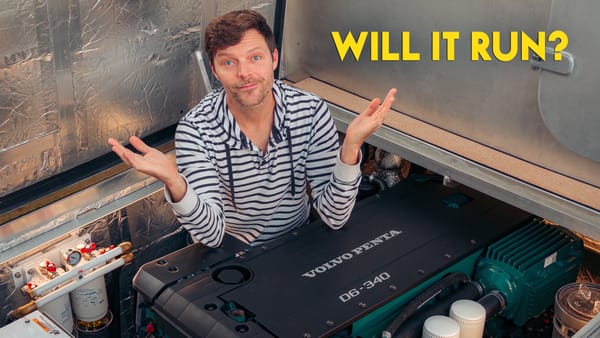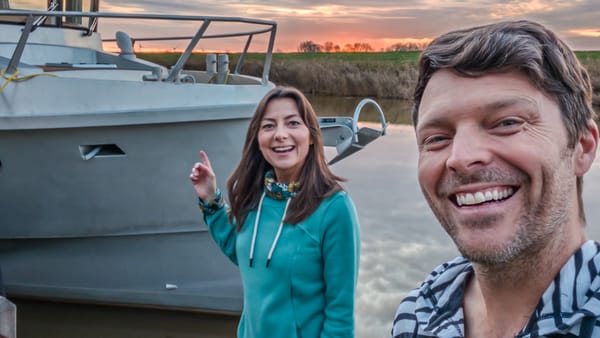All Electric Off-Grid Kitchen
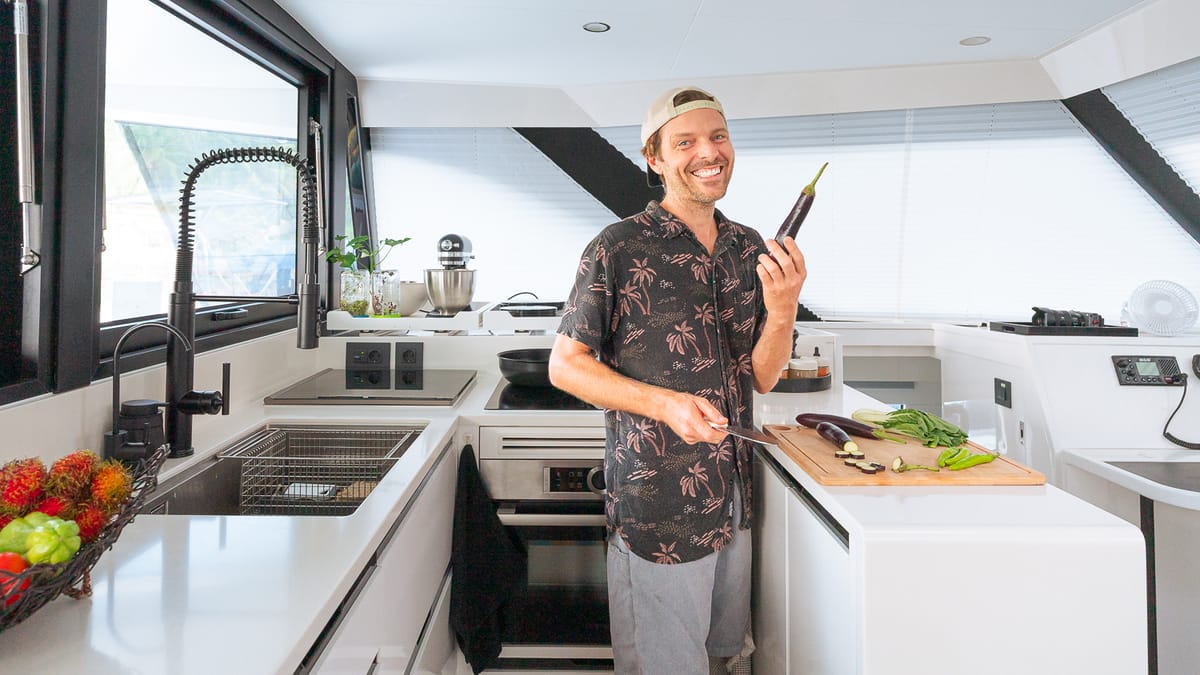
We’ve been living off-grid as nomads for over a decade. To say we’ve learned a lot over the years would be an understatement. Our traveling homes have gone from: glamping in our gold 1985 Volkswagon Vanagon (back when Jason’s hair was longer than mine), to four different RV’s, a 2005 Leopard catamaran to now living in a modern hybrid-electric catamaran.
The galley is our communal center point. We love food, we love cooking and we love making an event out of it. We can make a whole day revolve around what eventually ends up on the dinner table. Spearfishing, foraging…a trip to the farmers market, it’s all part of the adventure.
We spend so much time in the galley both on and off camera. It's undeniably the most important space on our boat. So, without further ado, here is most of our all-electric, floating kitchen appliances, gadgets, gear and general faves.
We're only a few months into living aboard CURIOSITY 2, so we'll keep updating the list as we go.
Resources
Being that this is an off-grid home (as are all vessels when they aren’t plugged into shore power) it’s important to first note where our resources come from.
Electricity: We have a massive solar array on our roof, hydrogeneration while sailing, and a healthy lithium battery bank.
Water: We have a fantastic reverse osmosis water maker and a rain water capture system that keeps us hydrated.
Water Filtration / Purification: Because we collect rain water, we also have a UV-LED water purification system.
You can get to know more about our vessel and systems here:
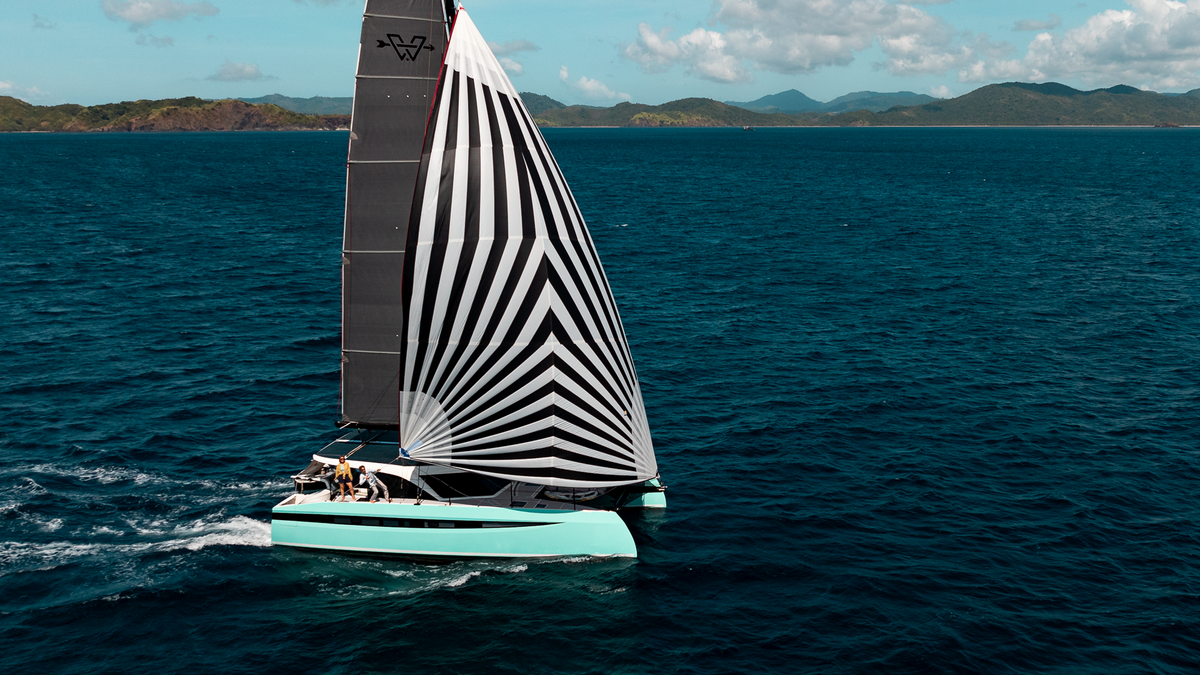
The Only In-Sink Dishwasher
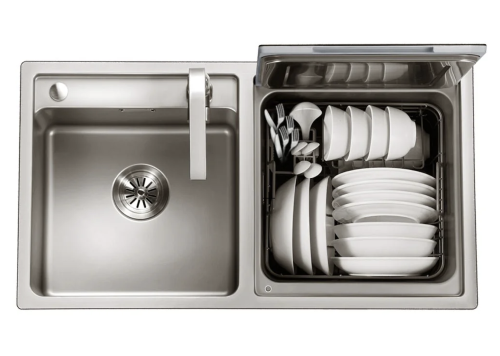
I seriously wish there were more top loading dishwasher options out there. But this is the only one we were able to find. It's now only sold as the sink/dishwasher combo now.
- In-Sink Dishwasher https://amzn.to/3A1fdeU
Stove Top
Our Stove Top is a Bosch Series 6 Induction cooktop. It works great and doesn't scorch pans.
Induction cooking is all-around better than any electric, gas, or propane stove I have ever tried. Plus it's very energy-efficient, creates less heat, cooks faster, has better temperature control and is way safer than cooking with gas.
We didn't have a choice but if we did, I wish we had a different model that allowed for slightly larger pan sizes (we have 6 & 8 inch burners). Most of the newer models of the Series 6 do have more options.
Portable Option: If you just want to dip your toes into induction cooking and try it out, this portable single burner cooktop is the one we had on our last boat: https://amzn.to/39qchsA
Fave Pots & Pans
Induction cooking does require special pans. You’ll need cast iron, magnetic stainless steel or essentially any pan that a magnet will stick to. Copper, aluminum, glass, and non-magnetic stainless steel (including 18/10 and 18/8) cookware won’t work.
- Frying Pans: https://amzn.to/3zW9qam
- Pots: https://amzn.to/4c0uNVp
- Stove Top Pressure Cooker (a must for rice, beans and soups): https://amzn.to/4dhAS0B
Oven
We have a Bosch Series 8 Built-in compact oven with microwave function. So far so good. The 4D hot air function cooks fast and evenly. No rotating needed. But, if you are looking for an inexpensive option, I always loved my Breville Smart Oven in our first boat: https://amzn.to/3SqJdqK
Mix / Chop / Blend / Slice / Shred / Roll Pasta
- Kitchen Aid Mini: https://amzn.to/3LOa9wV
- All The Attachments: https://amzn.to/3WJbZWw
GRILL & GRIDDLE
Fried eggs, toast, fish, make panini’s, french fries, tortillas, and well, anything that needs grilling or griddling. It serves so many purposes and fills many of my searing/grilling/cooking needs.
My favorite has always been the Cuisinart: https://amzn.to/3SljLTx
Like many of my kitchen faves, it fits the following criteria.
- Heat’s up fast.
- Provides even cooking and steady temps.
- Clean up is easy.
- Doesn’t break the bank
Bread Maker
We have a random brand we picked up here in Asia but I have always liked my basic Oster Expressbake the most.
Nothing beats freshly baked bread and a bread maker makes it all ridiculously easy. In less than 5 minutes I can toss in a few ingredients, set it and walk away. A bread machine works great and will turn anyone into a rock star baker.
Don’t waste the cash or counter space on the bulkier machines with all the extra buttons, settings and gizmos. This simple machine is reliable and still has plenty of options and settings. There is a dough only setting we use for pizza, cinnamon rolls, buns…the list goes on.
- Oster ExpressBake: https://amzn.to/3pyE3Zp
Yogurt Maker
Homemade yogurt is so incredibly easy to make and the benefits of yummy pro-biotic-infused yogurt are undeniable. It’s incredibly good for your gut, your wallet, and the biggest kicker for us travelers…. availability. Some remote islands don’t have fresh produce, much less yogurt. We store a year’s worth of cultures in a small container in our freezer. We use fresh milk on the rare occasion we are in a country that has it. Otherwise, we use box milk (UHT). We make a fresh batch every week. This is why a yogurt maker is a must-have on our boat. There are lots of options out there all similarly priced. We have an Asian brand now but we had the DASH on our last boat. If you have an instant pot, that also works.
- Yogurt Starters: https://amzn.to/3coM6Eo
- Dash Yogurt Maker:https://amzn.to/2PvGnia
- Other Yogurt Makers: https://amzn.to/36pncAZ
Blender
We consume a lot of smoothies but of course, there are lots of uses for a good blender. Making nut milk, frozen margaritas, soups, salsa, bean dips, hummus, guacamole, pesto…I could go on. I have the best affordable option I could find here in Asia. But one day, I will upgrade to a Vitamix.
- Vitamix 5200 – https://amzn.to/3SrVFGV
- (affordable luxury without stepping up to a Vitamix) Breville Fresh & Furious – https://amzn.to/2TKOlK1
- Personal Blender (the one I would have purchased if it were available at the time): https://amzn.to/4ddKGJL
Nut Milk Making Supplies
- Strainer: https://amzn.to/4fmIMrC
- Sealed Milk Canister (or salad dressing shaker): https://amzn.to/46lY0Jk
Refrigeration
We have a Vitrifrigo 180A. It's programmable but we use both drawers as our fridge. We've had error codes and issues with it since day one so we can't really say too much until it actually works. But if I could just have a residential style fridge, I soooo would. I am not convinced these 12v units used in recreational vehicles and boats are any more efficient. They certainly are not trouble free.
Mini Bluetooth Temperature Humidity Sensors
These little guys are super affordable and have been incredibly helpful! We can monitor the indoor and outdoor temp and humidity anywhere in the boat. Including monitoring the fridge/freezer temps.
Plus, we have watched what happens when we try out different settings on our AC. Which has helped us determine the best setting for dehumidification and power use. We can keep an eye on temps inside our tech spaces. We can see how hot it gets where we store paint and general chemicals. And of course, we can monitor temp and humidity inside our fridge when we think it's not working right.
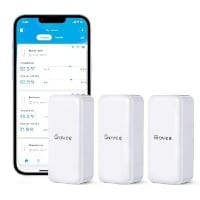
Another cool feature is how we can have preset ranges for temp and humidity on the app. Then we get alerts if anything is out of our set range.
- Buy Them From Amazon: https://amzn.to/3LknrkP
Vented Storage Containers
We find fruit and veggies last a lot longer if we clean and store them in vented storage tubs in the fridge. The basket keeps water from sitting, the vents allow for some air flow, keeps mold from creeping in, but still keeps the food plump and hydrated. Plus, it makes for an organized fridge.
These are not the exact tubs we have (can't find them online) but they would work the same.
Freezer
In our workshop space we have a portable 12v freezer. We had the same Snowmaster brand on our old boat and it always performed well with minimal defrosting needed. There are a range of sizes to choose from and all the specs are listed on their website.
- Snowmaster Classic: http://bit.ly/snowmaster12v
- Use discount code WYNNS for 7% off!
Curiosity 1 Galley Tour
Want to check out the setup on our last boat? Watch the full galley tour here:
Thank you!
Ups, downs and all arounds, we share it all. We’re able to do so because people like you show up each week, read, watch, share, and toss a tip in our production jar. If you like what you see, there are lots of FREE ways you can show your support.




